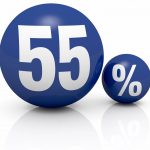A Simple System to Control Your Liquor Costs
Controlling liquor costs is vital to any restaurant and bar’s profitability. Without systems in place, it’s just too easy to lose money from behind the bar. For example there is accidental and purposeful over pouring, breakage and spills, or theft. No matter where the losses come from, it’s costly!
To help you start to control your liquor costs and make you more profitable, turn to the perpetual inventory form.
What is the perpetual inventory form? It is a simple clipboard system that is placed in your liquor room to control and track every bottle as it is placed into or removed from stock. The form can also aid in setting up accurate ordering par levels for your fast-moving liquors.
How to create and use the perpetual inventory form:
- Create a table/chart with the 11 columns (vertical) and as many rows (horizontal) as you have brands of liquor. Label the columns as follows:
- Brand of liquor
- Beginning inventory
- The days of the week that you are open
- Purchases
- Ending Inventory
- The rows will be your brands of liquor
- Either Sunday night after you have closed for business or Monday morning before you have opened for business, take an inventory of everything that is on the shelves in the liquor closet and write that number in the Beginning Inventory column.
- As your restaurant operates and bottles of liquor are emptied, a bartender needs to find a manager and hand the empty bottle to trade for a new bottle from the liquor closet. IMPORTANT: Never give your liquor room keys to a line employee. This will create an opportunity for theft. A manager should be the only person who has access to the liquor closet. This is the best way to keep honest people honest!
- The manager will go to the liquor closet, get the bottle for the bartender and mark down how many bottles were taken. The manager will write the amount in the row for the brand of liquor taken and in the column for the day of the week it was taken. Then the manager puts the empty bottle in a milk crate on the floor of the closet. NOTE: If you do not have a replacement bottle for a bottle of liquor that the bar needs, leave the empty bottle on the shelf where the backup would live. If the manager placing the order sees the empty on the shelf, he or she will know that it is needed on top of their normal par level.
- When a delivery is made, the manager checking in the order will place the bottles on the shelves and write in what was checked in under the Purchases column in the appropriate row.
- At the end of each night, the closing manager enters the liquor closet and verifies every empty bottle in the milk crate has been marked as taken that day. If it matches, the manager then throws the empty bottles away. If it doesn’t, the manager has to investigate whether any of the other managers did not follow the system, or if there was theft.
- On Sunday after the close of business or on Monday before you open for business, add the Beginning Inventory column with the Purchases column for each item, and then subtract the total number of bottles taken out for the week. This will give you how many bottles you should have on the shelves of the liquor closet (Ending Inventory). If you don’t, one of two things happened: one, the bar manager is not doing his or her job, or two, there is theft.
In the right margin next to the ending inventory column, write the total for all of the bottles that were taken out of the liquor closet. This number shows your use for all of your fast movers. It can be a great guide to setting pars and ensuring you order correctly.
As you can see this is a very simple bottle-in-bottle-out system. It’s a clipboard system and can be implemented almost immediately. Add to this system a policy that no managers share their keys with line employees, all backup liquors must be in a locked liquor room/closet/cabinet and that it must be strictly followed, and I promise you the opportunity for bottle theft falls dramatically. You will see a major drop in your liquor costs very quickly.
Have you struggled with liquor costs?





